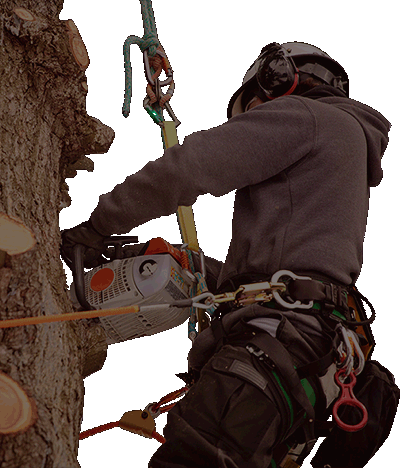
Japanese beetles are one of the garden’s biggest summer pests! They eat their way through our roses, fruit trees, shade Spartanburg trees and even our veggie garden.
And to a certain degree, that’s true. They lay eggs that turn into grubs and eat your lawn in late summer and again in spring. Then, those grubs turn into Japanese beetles–ready to do it all over again!
It’s time to stop the madness. Control Japanese beetle grubs this year to reduce their damage and decrease the number of beetles that return next year.
See Japanese Beetles? Learn When to Treat for Grubs.
Think you have Japanese beetles?
Japanese beetles are easy to spot in the garden. They have a bronze back, metallic green head and are about 0.5” long. You’ll see them eating almost every plant in your yard, leaving behind skeletonized leaves.
In fact, Japanese beetles eat over 300 different plants. Their favorite plants are roses, fruit plants/trees and these Spartanburg tree species.
Japanese Beetle Life Cycle (What Grubs Turn Into)
Japanese beetles lay grubs that eat your lawn. Grubs turn into Japanese beetles that eat your garden. Yes, two of the most hated garden pests are actually one in the same!
Let’s break that down. Japanese beetles lay eggs in your lawn that turn into lawn grubs in late July or early August. The grubs eat and dig up your lawn in late summer, hibernate all winter long and then come back with a vengeance in spring–ready to destroy your lawn again. Once they’re done with that, the grubs emerge as Japanese beetles in July.
Grubs in Lawn Symptoms
If you see Japanese beetles in your yard now, look for grub symptoms. That way you can stop this whole cycle from playing out again next year.
Look for:
- Discolored or wilting grass that initially looks like drought damage
- Damage along roads, driveways and sidewalks
- Spots of dead or dying grass in early spring (April or May) or early fall (August, September or October)
- More skunks, raccoons and moles in your yard because they love to eat grubs
- Areas of grass that you can easily lift or roll back because the grubs ate the roots
- White grub larvae that look like worms under your grass, which you can see if you pull back the grass or dig a bit
When to Treat for Grubs
If you see grubs in late summer or early fall, that’s the best time to treat and control them. Come spring, the grubs are much bigger and almost ready to grow into beetles, which makes controlling them less likely.
Look for a product with an active ingredient of either diazinon or dylox. Closely follow the product directions to apply the right amount in the right way. Or click below to have us get rid of your grubs.
Have us handle the hard work. Click here to control your grubs once and for all!






